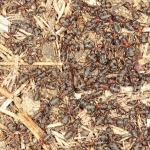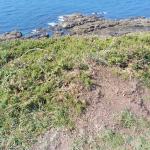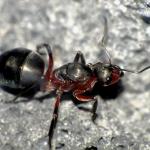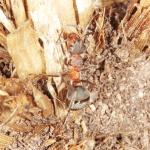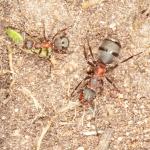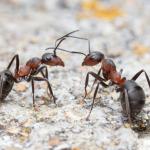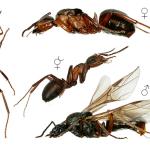One of the mound-building ‘wood ants’ (Formica s. str.), F. pratensis has always been the least frequently recorded species of this group in Britain. The confused nomenclature of the four British representatives of this group, and the morphological distinctions between them, have been considered by Yarrow (1955). In Europe, two forms of F. pratensis may be recognised (Kutter 1977; Seifert 1996). Although these have been treated as separate species (F. pratensis and F. nigricans) by some authors, Bolton (1995) and Seifert (1996) include them both in F. pratensis.
On the British mainland, F. pratensis has been recorded only from the Bournemouth area and Dorset heathland near Wareham. It occurs on the Channel Islands, but is absent from Ireland. Elsewhere, it is known from Portugal to central Asia, and from central Sweden to central Italy (Collingwood 1979).
Listed as Endangered by Shirt (1987) and Falk (1991), and now probably extinct on the British mainland. Formica pratensis was discovered near Bournemouth in 1864, and early records suggest that it may have been common in this area (Yarrow 1955). The last known nest, near Wareham, died out in 1987. Factors contributing to this ant’s decline appear to have been habitat loss, and competition from F. rufa associated with changing land use.
Nests occur typically in dry scrubby heathland, meadows, hedgerows and grassy roadsides, and occasionally in woodland where F. rufa is absent. In the Channel Islands, nests occur on scrubby cliff slopes, often at the edges of the coast paths.
Winged males and females can be present in nests from May to September. Pamilo & Rosengren (1983) and Seifert (1996) suggest that this unusually extended period reflects the production of two separate generations of these castes in a single season. Mating flights typically occur on sultry days and during the morning.
Nest mounds are generally smaller and flatter than those of other wood ants, and composed of coarser materials, including plant fragments, soil particles and small pebbles. Most nests exist in isolation, but interconnected groups also occur. Each nest has only one or a few queens. New nests may be formed by the budding of an existing nest, or by temporary social parasitism. In the latter case, a newly-mated female enters an established nest of another Formica species and becomes the exclusive egg-layer after eliminating the resident queen. Formica pratensis uses both F. cunicularia and F. fusca in this way (Donisthorpe 1927; Seifert 1996).
Foraging workers follow pheromone trails leading from the nest mound. They prey on arthropods, and collect aphid honeydew and floral nectar.
2005


